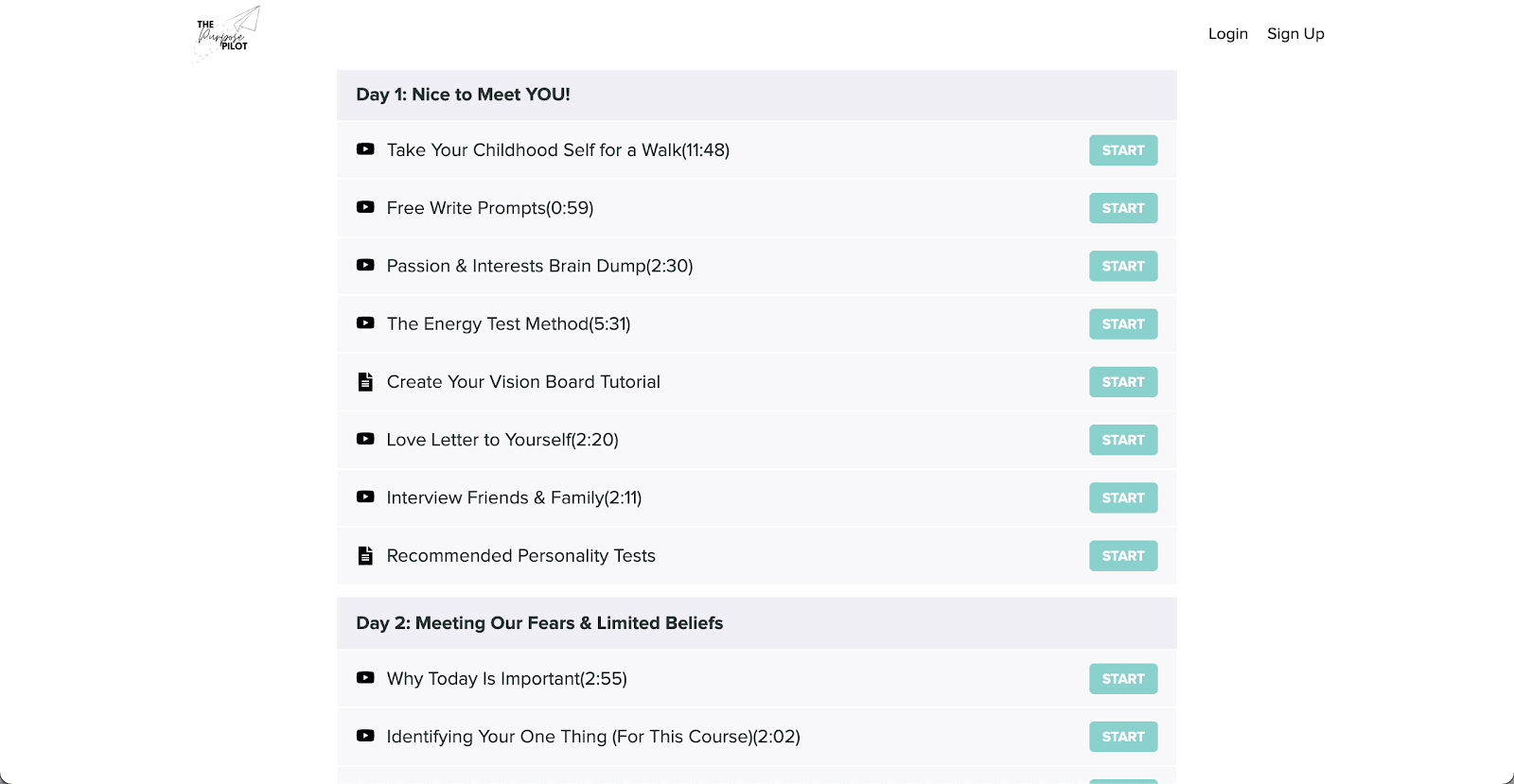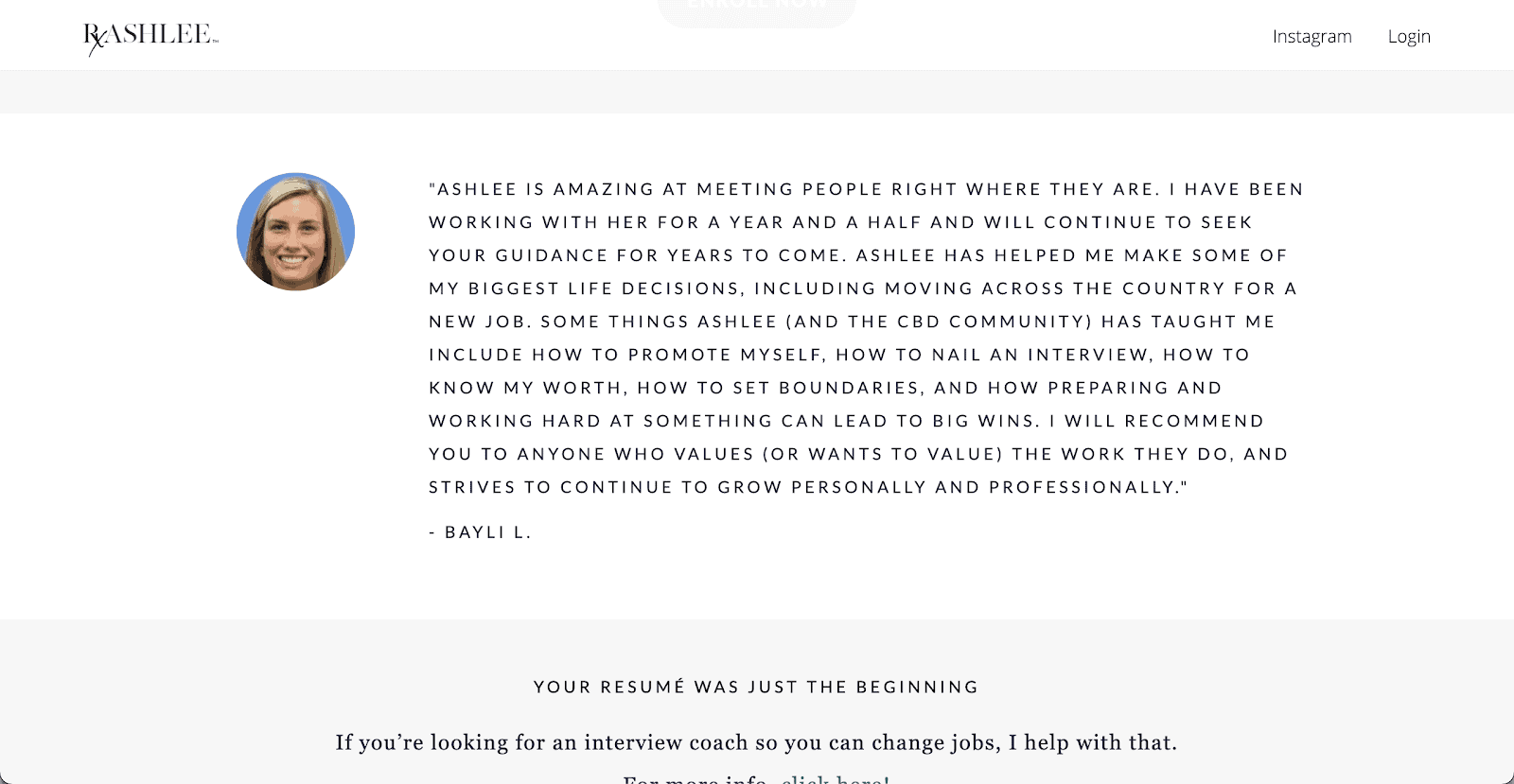The excitement of course launch day is undeniable for creators. At first, it’s easy to put most of your energy into the presale phase to build up audience anticipation and secure sales. However, the post-sale period of your course launch is equally important. In fact, the period post-customer purchase is crucial for building a successful online course.
In reality, selling your online course is just step one in running a successful online business. If you want long-term success, think about what will happen once students take your course, how you’re going to nurture those newfound relationships, and how you can keep paying customers coming back for more.
How can you, as a course creator, secure long-term post-launch success of your online course? We have four key pillars that will help you launch and build a successful online course that has longevity.
Build a successful course in four steps
Step 1: Don’t try to pack your online course with too much information
It’s common for creators to think that if students are spending the money on an online course, they should get all the possible information on the topic in one course.
Even if you price your course at a premium, which you should, that doesn’t mean your course should include everything you know. In reality, packing your online course with too much information may harm your business.
A successful online course is not one that has the most amount of information on a certain topic but rather the right information. Just as Google has millions of results and only a handful of them are of true value to the searcher, your online course has to contain selective information that will be valuable to your students.
Transform, don’t stuff
Building a successful online course in the long term involves offering a transformation. This is something that gets your customers the results that they’re seeking. Think: They have an issue they need solving, and your course is the only—and right—solution to their issue.
Jenna Kutcher is a prominent online marketing podcast host. On her Goal Digger Podcast, Jenna reveals some of her best tips for creating and selling successful online courses.
Her philosophy is to avoid stuffing your online courses with too much information:
“Sometimes new course content creators feel the need to justify the price of their course, so they throw in this bonus, or that group call, or this “should be for sale as a separate product and not included in the course” [product]. Here’s what I’ve learned: It is far more valuable to create a course that is no fluff, not overwhelming, and that people will actually be able to get through and get results.”
– Goal Digger Podcast, Ep. 235.
Too many sections with too much information can overwhelm your students and may lead to drop off. If students don’t finish your course, they don’t get the value you’re offering. As a result, you won’t be as effective in helping them to achieve goals.
Instead, make it as easy for students to finish your online course. Implement content that is not overwhelming so they could make the change they were looking for in the first place.
Bite-sized content
Haley Hoffman Smith offers The Purpose Pilot to help students find their current purpose and goals in five days. Her course is designed to be straightforward with a clear finish line. It offers lessons in short videos that are easy to consume:

When students are taking Haley’s course, they are introduced to the transformation (finding their purpose) immediately and see that they can manage this change within five days. Breaking content up this way allows students to hyper-focus on why they came to her course in the first place.
Takeaway: Splitting your knowledge into smaller chunks and packaging them into separate online courses holds more value than stuffing one course with too much information. Doing so allows you to offer a stronger transformation initially and retarget your students to make more sales down the line.
Step 2: Drive more sales with the help of your students
We already discussed how successful online courses offer a transformation to potential customers. But, it’s those transformations that lead to testimonials and reviews, many of which you see on successful course sales pages.
Career By Design Community by Ashlee Klevens Haynes has a sales page that showcases not only what her course has to offer, but also the transformation it will provide to future students.

But, Ashlee uses her past and current students to sell her course for her. She lets her past and current students speak for her, allowing them to showcase how their lives have changed since they became her students.
Remember: Testimonials are the most effective way to sell your online course. Past students are your number one salesforce because they’ve been through your course and experienced life before and after your course.
Make sure to always ask your students for testimonials, whether it would be reaching out to them personally and asking to answer a few questions or sending a questionnaire post course completion. If you have a close community for your online course, go the extra mile and ask for video testimonials from your students.
Takeaway: Your past students who are happy to vouch for your online course and business are your brand ambassadors. Don’t be afraid to showcase their experiences on your website or sales page. Long-term course success is fueled by the trust earned from pleased past students.
Step 3: Don’t leave your customers hanging once the sale is closed
Once you’ve made a sale, you may be tempted to move on to the next sale and look for new customers interested in your product. But for your online course’s long-term success, you should continue to nurture the relationships of current paying customers.
If the first two principles of course success and longevity are focused on brand building, then the third is focused on loyalty. The secret to a successful business is to find people who will be die-hard fans of your brand—those who will buy every single product you will ever launch.
Make customers into superfans
This is what Pat Flynn writes about those die-hard fans of your brand in his book, Superfans:
“But focusing on the experiences that create superfans is more important than any other activity in your business. It’s more important than getting more traffic, more followers, more views, or more subscribers. It’s even more important than building your email list and acquiring more customers. Why? Because when you focus on creating superfans, as a byproduct, you’ll get more traffic, more followers, more views, and more subscribers. You’ll build a stronger, more targeted tribe who will go out of their way to support you and what you do.”
If you create an actionable course and help your customers achieve a goal they have or solve an issue in their lives, that’s 50% of your work done. The other 50% will be nurturing the relationship with them further down the line.
Retain and engage
Now, there are a few different ways you can do this. One way is to create a private community of people interested in your brand and allow them to connect with you and other students with similar issues and interests.
You could also offer Q&A sessions or group coaching calls for students who purchased your online course to make your relationship stronger. At Teachable, we offer a coaching service that allows you to easily set-up a coaching page, manage bookings, and build those connections with your students.
Nicolas Botomisy offers an All Access Subscription for all of his students, which allows them to participate in private group chats, monthly Q&A sessions, and so much more.

{{coursecurriculum-component="/blog-shortcodes/blog-popup"}}
Nicolas knows the importance of building a community and helping his students become better chefs by answering their questions even after the sale is done. Having this option helps his business stand out in the crowd.
Think of it this way: Students who are considering between multiple courses are more likely to choose the course that will give them access to monthly Q&A sessions whenever they have questions over a course that doesn’t offer community support. In the long term, community building may just bring in more business for creators like Nicolas.
Takeaway: Don’t forget that building a successful online course depends strongly on your ability to turn your customers into superfans. The Pareto Principle says that 20% of customers usually account for 80% of businesses’ revenue, so nurturing your relationship with your paying customers is as important as nurturing your relationship with potential customers pre-sale.
Step 4: Think about what’s next and then create it
If you want long-term success for your online course, you have to remember that people paid money for your product and they want to hear what you have to say. That means they may be coming back for more of that knowledge they paid for in the future.
It’s important that your online course information is always up to date and improved upon as the years go by and technology and trends change. Thinking about new projects can be very exciting, and it’s crucial for moving forward with your business, but creating and keeping up the quality of your initial products is also imperative to your business’s success.
While you should spend time keeping up to date with your courses, it’s essential for the long-term success of your business to always look for ways to expand your product base.
Expand your product line
Your Social Team by Manu Muraro has a variety of different products to offer to her students. Her products include online courses, online training, and e-books, so students with different tastes and needs can find something fitting for them.

Manu knows her students and what their needs and struggles are, and she expanded her product range to help her students cover all the bases when it comes to learning social media strategies for businesses.
Takeaway: Expanding and improving your product base is crucial to building a successful online course. You should always be watching trends in your specific industry and exploring ways to create new timely online courses or expanding courses that complement each other.
Don’t just stop at online courses, though. Expanding your product base with ebooks, workbooks, and custom coaching packages can be useful and profitable as well.
Breaking it down
The post-sale phase in your online course sale is just as important as the presale, and now you should have all the right tools to learn how to create a successful course in the long term.
Remember that focusing on your online course’s long-term, sustained success should be a priority. But you can only achieve it by truly serving the students who are buying from you.
4 key pillars of a sustained course success
- A specific course topic that offers a valuable (and clear) transformation
- A testimony-rich sales page that relies on customer loyalty that sells for you
- Attention to nurturing customer relationships
- An open mind to offer supplemental options or offerings
Provide your customers with excellent course material, regular improvements, and attention to their needs. With these in mind, your business will be flourishing for many years to come.
Join more than 150,000 creators who use Teachable to make a real impact and earn a real income.


.png)

.png)
.png)


